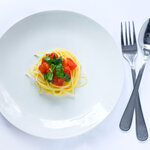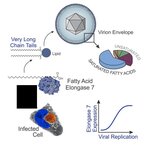Genetics & Molecular Biology

Gene variations that could mean yield increases, drought tolerance and aflatoxin resistance will boost productivity in the years to come.
A study included the growing years of 2011, a drought year, and 2012, on dryland and irrigated corn in College Station and in Mississippi, all with similar results, said Dr. Seth Murray, an AgriLife Research corn breeder in the soil and crop science department of Texas A&M University at College Station.
Murray said at this time all corn seed available to growers in Texas comes from commercial breeding conducted in the Midwest. As a result, there's…

A broccoli variety modified to have two to three times more of the naturally occurring compound glucoraphanin, which is linked to antioxidants and other health benefits, also reduces blood LDL-cholesterol levels by around 6%, according to results of human trials.
Glucoraphanin is thought to work by helping maintain cellular metabolism. Mitochondria, the energy factories of the cell, convert sugars and fats into energy, but if they aren't working efficiently, one response is to channel excess into cholesterol.
In two independent studies, researchers gave a total of 130 volunteers…

A new study has found that nearly all pancreatic cancers enslave and deform mitochondria, the powerhouses of cells, and force them to divide unnaturally, to lose their normal shape and collapse around the cell's nucleus.
This creates an environment even more conducive to tumor growth.
The researchers looked at tumors caused by mutations in the gene Ras, which is mutated in up to 30 percent of all cancers. Ras activates a cellular signaling pathway, the MAP kinase pathway, that was discovered years ago by
University of Virginia
researchers Michael J. Weber, PhD, and Thomas W…
The diversity within grapevine varieties is incredibly rich. This is good news for viticulturists – grape cultivators – and wine makers because it allows them to adapt their wine production according to the conditions in their vineyards and to the wines they want to make.
Pinot is one of the most ancient grapevine varieties and the Pinot family is an invaluable source for the production of a wide range of wines from around the world. There’s the Pinot noir from Burgundy, California or New Zealand, Pinot Meunier in Champagne, Pinot gris in Alsace or Pinot blanc in Italy.
Cultivating pinot.…

Boosting the photosynthetic efficiency of plants offers the best hope of increasing crop yields and feed a planet expected to have 9.5 billion people on it by 2050, according to a new report.
Photosynthetic microbes offer other clues to improving photosynthesis in plants. For example, some bacteria and algae contain pigments that utilize more of the solar spectrum than plant pigments do. If added to plants, those pigments could bolster the plants' access to solar energy. Some scientists are trying to engineer C4 photosynthesis in C3 plants, but this means altering plant anatomy,…

Nobody likes getting the flu, and it isn't fun, but for most people drinking fluids and getting some rest and waiting it out are all it takes.
But a small number of children who catch the influenza virus fall so ill they end up in the hospital, even needing ventilators to breathe, though family and friends recover easily. New research says that is due to a rare genetic mutation.
The researchers scrutinized blood and tissue samples from a young girl who, at the age of two-and-a-half, developed acute respiratory distress syndrome after catching the flu, and ended up fighting for her life in the…

Intermittent fasting (also called alternate day fasting) has become a popular diet.
In most versions of intermittent fasting, people fast or eat very little a few days each week and then eat normal amounts during the remaining days.
Fasting is something that human beings have practiced throughout history, often out of circumstance rather than choice. Our hunter-gatherer ancestors were probably expert fasters, indulging in feasts in times of plenty, and then facing long periods of scarcity in between. With this in mind, it makes sense that our bodies' cells could perform well under the harsh…

More than 60 percent of the world's population is infected with a type of herpes virus called human cytomegalovirus, which replicates by commandeering the host cell's metabolism, but the details of this maneuver have been unclear.
Researchers have discovered that cytomegalovirus manipulates a process called fatty acid elongation, which makes the very-long-chain fatty acids necessary for virus replication. They identified a specific human enzyme - elongase enzyme 7 - that the virus induces to turn on fatty acid elongation.
"Elongase 7 was just screaming, 'I'm important, study me,'" said John…

Animal development has an intriguing puzzle - scaling, the proportionality of different body parts. Whether you have an elephant or a mouse, organ and tissue sizes are generally proportional to the overall size of the body.
Clearly evolution determined 'just right' but how? Some new clues from fruit flies show the size and patterning accuracy of an embryo depend on the amount of reproductive resources mothers invest in the process before an egg leaves the ovary.
Scientists study flies because they are a comparatively basic animal which leads to fundamental principles and mathematical…
Both vegetarians and elite environmental activists have long considered meat as a vital food to cut if we are to reduce global emissions. For poor people, elites in developed nations believe beans would be a good substitute. While their 'it takes a gallon of gas to make a pound of beef' metric has long been debunked, they are not wrong for believing that livestock leads to emissions that would not be evident if we did not want the world's poorest to be equal to the rich when it comes to nutrition.
Yet in a global warming world, what might happen to beans, the 'meat of the poor'?
Food…